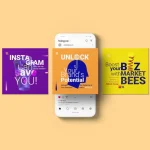What are the latest trends in the marketing and advertising industry?
Latest Trends in the Marketing and Advertising Industry
In the rapidly evolving landscape of marketing and advertising, staying ahead of the curve is essential for businesses striving to stand out. From the dynamic shift in digital strategies to the resurgence of authentic connections, let’s delve into the latest trends that are reshaping the marketing and advertising industry.
The Dynamic Landscape of Marketing and Advertising
The marketing and advertising arena is dynamic, and keeping up with the latest trends is pivotal for brands aiming to leave a lasting impression. Let’s explore the trends that are redefining the industry.

Rise of Conversational Marketing
In the digital age, fostering real connections with customers is non-negotiable. Conversational marketing, characterized by personalized interactions and real-time engagement, is taking center stage. Businesses are leveraging chatbots, social media messaging apps, and live chats to establish meaningful dialogues that nurture customer loyalty.
Example: ManyChat, a leading chat marketing platform, reported that businesses using chatbots experienced a 3.6 times increase in open rates and a 2.5 times increase in click-through rates compared to traditional email marketing.
Video Dominance in Content Strategy
Visual content continues to dominate, with videos leading the way. Short-form videos, live streams, and interactive video content are captivating audiences across platforms. Brands are utilizing video to tell compelling stories, showcase products, and provide immersive experiences that resonate with their target audience.
Example: YouTube revealed that over 2 billion logged-in monthly users consume billions of hours of video content daily. Moreover, 82% of Twitter users watch video content on the platform.
Navigating the Digital Sphere
The digital realm is a playground for innovative marketing strategies. Let’s uncover the trends that are reshaping how businesses navigate the online landscape.

AI-Powered Personalization
Artificial Intelligence (AI) is revolutionizing marketing personalization. By analyzing user behavior and preferences, AI enables brands to deliver tailor-made content and product recommendations. This not only enhances the customer experience but also significantly boosts conversion rates.
Example: E-commerce giant Amazon attributes 35% of its revenue to its recommendation engine, which uses AI to suggest products based on user browsing and purchase history.
Search Intent Optimization
Search engine optimization (SEO) has evolved beyond keywords. Understanding the intent behind search queries is now paramount. Brands are focusing on delivering content that precisely addresses user needs, resulting in higher search rankings and improved user engagement.

Semantic Keyword Research
Semantic keywords are taking the spotlight. Rather than fixating on exact-match keywords, marketers are embracing a more holistic approach. By considering context and related terms, content is aligned with what users are genuinely seeking.
A study by Moz found that pages ranking higher in search results tend to incorporate semantic keywords and variations naturally within their content.
Featured Snippets and Voice Search
Featured snippets have become the coveted spot in search results. With the rise of voice search, claiming the featured snippet position is a direct path to providing answers to users’ spoken queries.
Example: According to a study by Ahrefs, 12.3% of search queries have featured snippets, and voice search accounts for a substantial portion of these snippets.

The Renaissance of Authenticity
Amid technological advancements, authenticity is making a powerful comeback. Let’s explore how authenticity is shaping the marketing landscape.
Influencer Credibility
Influencer marketing has evolved beyond celebrities. Micro-influencers, who possess a smaller but highly engaged audience, are gaining traction. Their authenticity and relatability make them invaluable for brands aiming to genuinely connect with consumers.
Example: Instagram micro-influencer @sincerelyjules (Julie Sariñana) with around 5 million followers has created successful collaborations with fashion brands due to her genuine and relatable content.
User-Generated Content as Social Proof
User-generated content (UGC) serves as compelling social proof. Customers trust their peers more than advertisements. Brands are encouraging users to create content featuring their products, building a sense of community and authenticity.
Example: Starbucks initiated the “#WhiteCupContest,” encouraging customers to decorate their white cups and share images on social media. The campaign generated 4,000 entries within three weeks.
The Power of Data
Data-driven strategies are steering the course of modern marketing. Let’s delve into how data is transforming the way brands strategize and execute their campaigns.
Predictive Analytics for Precise Targeting
Predictive analytics leverages historical data to forecast future trends and behaviors. Marketers use it to identify high-potential leads, customize content, and optimize campaigns for maximum impact.
Example: Netflix uses predictive analytics to analyze viewer behavior and preferences, which assists in recommending personalized content and predicting successful show concepts.
Privacy-First Marketing
Amid rising data privacy concerns, brands are adopting transparent data collection practices. Stricter data regulations are compelling marketers to prioritize user consent and provide clear value in exchange for data.
First-Party Data Utilization
First-party data, collected directly from customers, is becoming more valuable. It enables personalized marketing while respecting user privacy, as it doesn’t involve third-party data sharing.
Example: HubSpot reported that businesses using personalized marketing strategies based on first-party data saw an average 19% increase in sales.
Conclusion
The marketing and advertising industry is a realm of perpetual innovation. From conversational marketing to the revival of authenticity and the data-driven revolution, these trends are reshaping how businesses connect with their audiences. By embracing these trends, brands can navigate the dynamic landscape and thrive in an ever-evolving digital era.

FAQs About the Latest Marketing Trends
What is conversational marketing?
Conversational marketing involves personalized interactions with customers through channels like chatbots, social media messaging, and live chats. It aims to foster genuine connections and enhance customer engagement.
Why are short-form videos essential for marketing?
Short-form videos capture attention quickly in today’s fast-paced digital world. They convey messages concisely and are highly shareable, making them effective tools for brand communication.
How does AI-powered personalization work?
AI-powered personalization uses algorithms to analyze user data and behavior. This enables brands to deliver customized content and product recommendations, improving user experiences and conversions.
What is semantic keyword research?
Semantic keyword research goes beyond exact-match keywords. It considers the context and intent behind search queries, allowing marketers to create content that directly addresses user needs.
Why is user-generated content valuable?
User-generated content (UGC) serves as authentic social proof. It demonstrates real customers’ experiences with a brand’s products or services, building trust and credibility among potential buyers.












